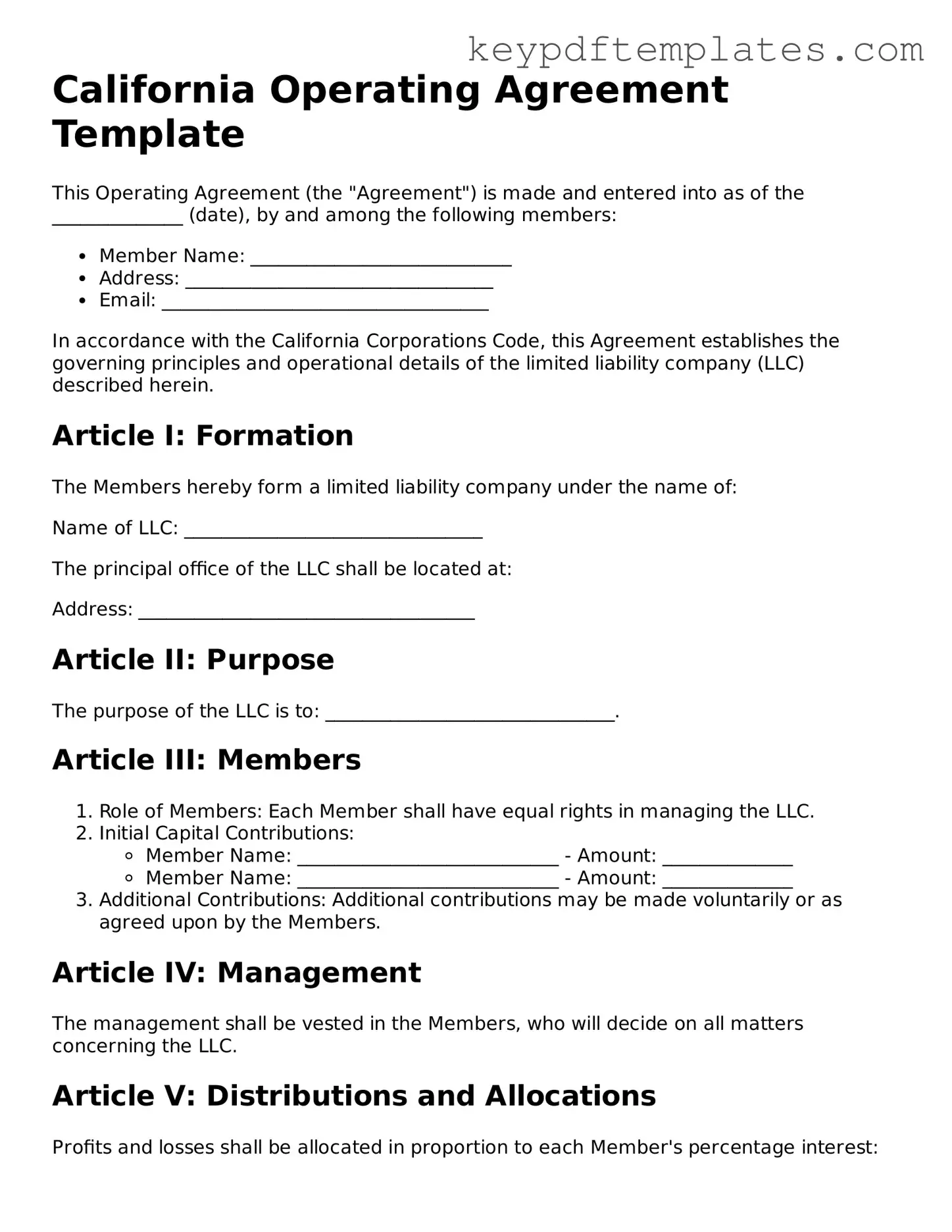Legal Operating Agreement Document for the State of California
The California Operating Agreement form is a crucial document that outlines the internal workings and management structure of a limited liability company (LLC) in California. This agreement serves as a foundational framework, detailing the rights and responsibilities of members, as well as the procedures for decision-making and profit distribution. By establishing clear guidelines, the Operating Agreement helps to prevent misunderstandings and disputes among members.
Modify Document Online
